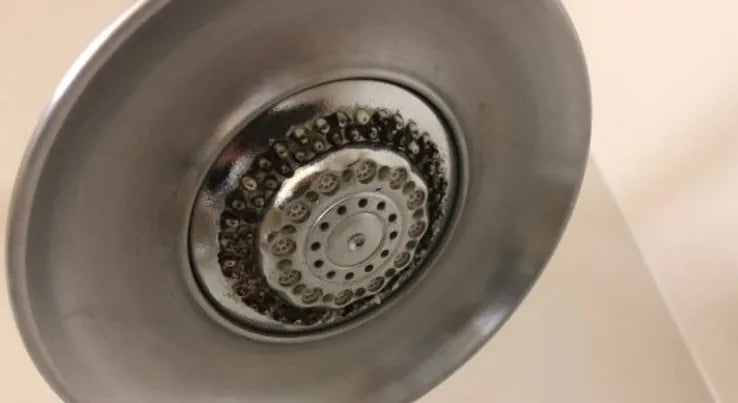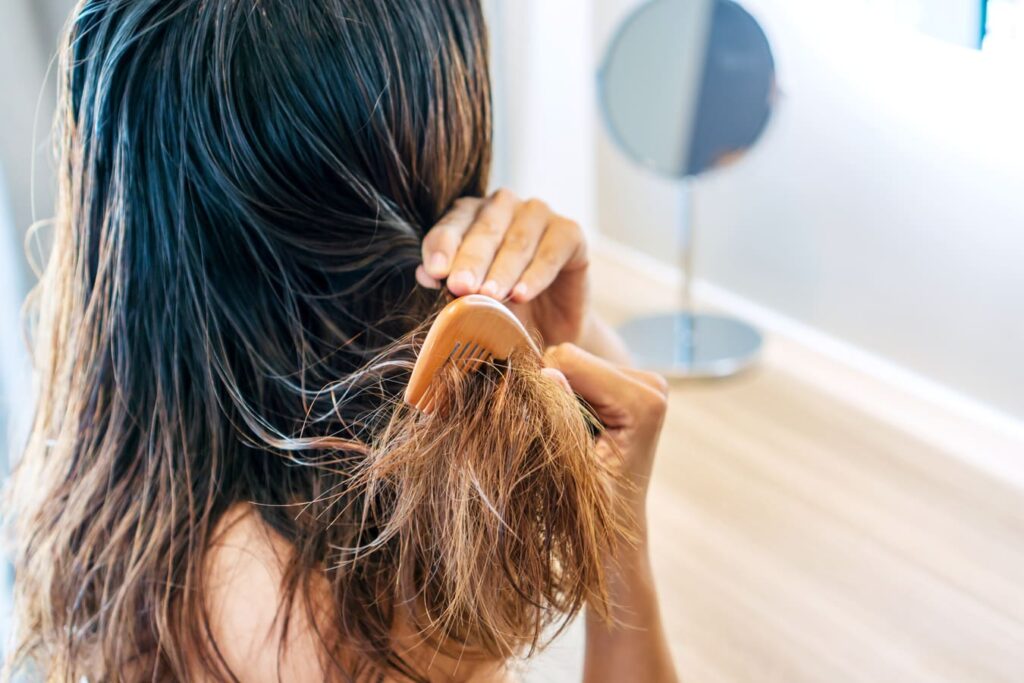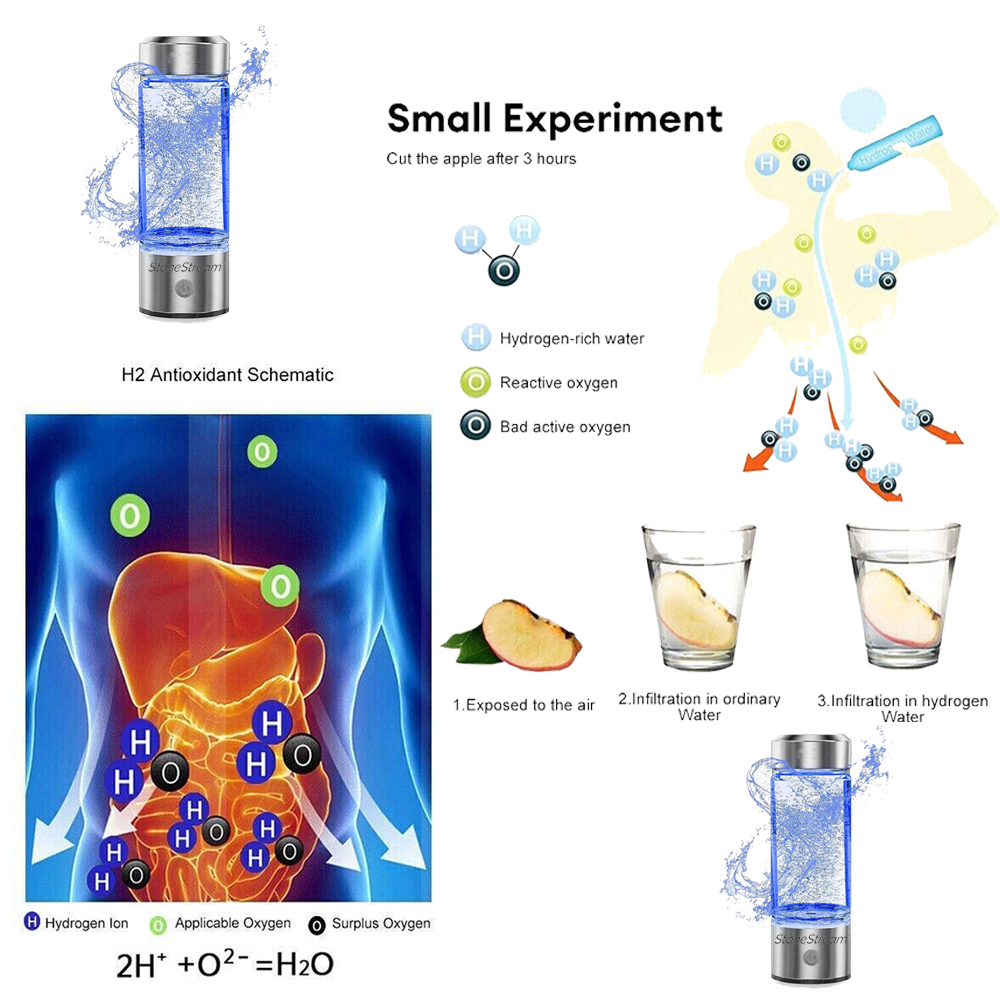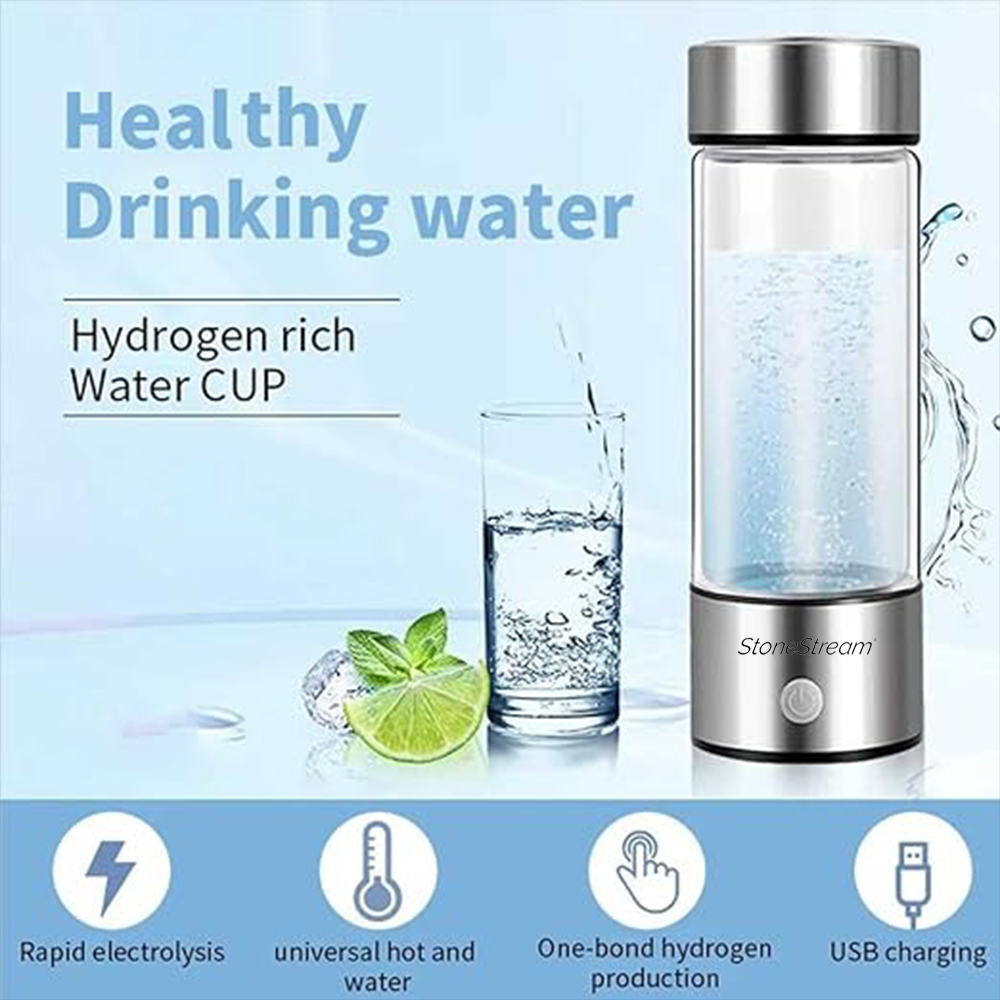You’ll probably notice immediately if there’s any mould on the shower curtain, walls, tiles, glass shower doors, and ceiling. You’ll also take whatever steps are necessary to clean these areas. But how many of you have stopped to consider whether there are microbes and mould within or on your shower head? Do you clean your shower head often?
Unfortunately, a Perfect Habitat for Shower Bacteria
You may know that fungal spores and various microbes thrive in warm, damp, and humid conditions. And what better place is there for them to grow than in your shower head, where they get a regular stream of nutrients whenever you shower?
What Types of Shower Head Bacteria Are There?
There are many different types of bacteria around you, but not all of them are dangerous. So don’t panic when we say there are bacteria everywhere in our bathrooms! However, a PhD researcher from Bristol University’s School of Biological Sciences found traces of Salmonella and E.Coli in family bathrooms, both of which are potentially hazardous to health and can cause gastroenteritis, vomiting, and diarrhoea. Yikes!
Another type of bacteria, Legionella, which causes Legionnaires' Disease, lives in your domestic water system and thrives in warm water, finding plenty of nutrients to survive on such as biofilm slime, rust, algae, and limescale at temperatures between 20°C to 45°C.
The unusual fact here is that you catch the disease (a pneumonia-like illness) from Legionella by inhaling infected water droplets. This disease can cause various problems, especially if you have underlying health issues. In severe cases, it might even be fatal. So, watch out if you shower in a neglected and dirty bathroom that stores warm water. Fortunately, it’s easy to get rid of Legionella and other types of bacteria as well as the black mould on shower heads, but we’ll talk about this in a bit.
How to Prevent Bacteria and Mould from Thriving?
First of all, we’re exposed to all kinds of bacteria, fungus, and mould all day, every day. And most of them will not do us any harm. In fact, some types of microorganisms are beneficial to us and can help boost our immune systems.
But, today we’re talking about the other kind of microorganisms — the nasty ones.! We’ll show you how to effectively clean your shower head and get rid of pesky, disease-causing bacteria and mould. Follow our tips and you won’t have to throw away your old shower head unless you wish to upgrade and renew it.
There are simple ways to prevent the growth of shower head bacteria and mould. Let's explore some of them, shall we?
Regularly Clean the Shower Head
Your shower head shouldn't have to be dirty in order for you to clean it. It's good to regularly clean the shower head (and other bathroom fixtures) to keep the germs at bay. However, because the ‘inside’ surfaces of such fixtures aren’t visible, we often tend to forget about them. Set up a regular cleaning routine to exterminate all the shower head bacteria and mould before they start to multiply.
Now, some important points to be aware of. DON’T use bleach to clean the shower head. There are safe, non-toxic, and much more effective ways to rid your shower head of the little microscopic monsters.
DO NOT use harsh chemicals either. They may damage your shower head and most shower manufacturers specify not to use these.
Also, FORGET coarse brushes to scrub your shower head clean. Many powder-coated finishes will get scratched. So, what is one to do? We'll explain.
The Best Way to Clean a Shower Head
You’ll notice that the water jets get diverted when the holes get blocked. So, rub the holes with your thumb to loosen up the dirt particles. If that doesn’t work, consider using an old toothbrush to dislodge the particles in and around the spray holes.
White vinegar is fantastic for cleaning shower heads. The acetic acid in the vinegar breaks down many mineral deposits, including rust and limescale. If you have a fixed shower head, fill a plastic bag with vinegar and tie the bag over the shower head. Leave the vinegar to soak for a few hours, preferably overnight. Then, run very hot water through the nozzle to dislodge the debris.
If your shower has a removable wall-mounted shower head with a flexible hose, then clean it in a slightly different way. Once again, use white vinegar. But, this time, use a bowl. Remove the shower head from the hose and dismantle it. Soak the pieces in the bowl, making sure that everything is submerged. Leave for a few hours, preferably overnight. In the morning, rinse the pieces, taking care to flush away any solids, and reassemble the shower head.

Clean your shower head using an old toothbrush to dislodge any particles from around the spray holes.
How Often Should I Clean the Shower Head?
We advise you to give your shower head a really thorough cleaning once every three months, but it’s a good idea to include it in your weekly cleaning routine. All you need is to wipe it down with a paper towel soaked in vinegar. This will prevent a serious build-up of limescale, dirt, and the bacteria and mould that thrive on limescale.
Do remember that bacteria and mould can live in other parts of your domestic water system so it isn’t enough to just keep the shower head clean. To reduce the presence of bacteria and especially if your water system is at risk from Legionella, you might like to have a professional plumber flush your system and carry out an inspection.
Regulations vary in different countries, but in the UK, only public and commercial buildings, and ‘at risk’ locations like hospitals and care homes require an annual inspection. If you’ve just moved into a new house, it might be a good idea to get an assessment done. The inspection will highlight potential fungal and bacterial breeding grounds and the plumber will suggest ways (such as replacing old water tanks with new plastic ones with fitted lids) to fix the problem.
Prevention Is Better Than Cure
Many areas have hard domestic water. This means that it’s quite common for your domestic water to carry dissolved minerals, sometimes at a high concentration. These dissolved minerals are often the prime cause of problems with your shower head. By far the best way to prevent this is to install a water filter and softener, either where the water enters the house or at each of the water outlets. Shower heads are no exception and many manufacturers specialise in these with in-built water softeners and filters.
Stonestream© has a range of products designed especially to remove dissolved minerals, suspended solid particles, and bacteria. Our high-quality and efficient water filtering and softening EcoPower shower heads will prevent the growth of bacteria and mould since they filter out the dirt and limescale that attract such microorganisms in the first place.
StoneStream EcoPower ShowerHead

Buy Now
We talked earlier about the Legionella bacteria which causes so many problems in our air conditioning systems, water storage systems, and anywhere they can thrive and produce infected water droplets. Here are some tips to steer clear of this bacteria:
-
Keep your water system, showerhead, and hose free from limescale, rust, dirt, slime, and other contaminants.
-
Produce hot water at a temperature of at least 60°C.
-
Keep cold water pipes below 20°C.
-
Remove plumbing dead legs to reduce areas of stagnant water.
Remember, hot water at a very high temperature produces an increased risk of scalding. You must install thermostatic mixing valves at all hot water outlets, especially at the shower outlet. This will help prevent potential hazards from turning into nasty accidents.
High Levels of Bacteria and Mould are Easy to Remove
So, to sum up, if your domestic water system is out of date, have an inspection to highlight any plumbing issues and get them fixed. This will also eliminate potential bacterial and fungal breeding places within your water system in general. If you live in the UK, make sure the work complies with the UK Water Regulations. If you live elsewhere, you’ll probably find that your own country has equivalent regulations. You’ll need professional help with this.
To reduce the growth of bacteria, mould, and fungus, you must regularly clean all your water outlets, especially shower heads. Remove all contaminants such as limescale, rust, and slime by installing water filters and water softeners either where the water enters your property or at various outlets. If you are focusing just on your shower room, go for filtered shower heads and water softener shower heads.
Remember that many manufacturers supply shower heads designed to remove these contaminants and it’s worthwhile installing one of the good ones.
Feel free to check out StoneStream's range of shower heads and shower accessories (such as replacement filters, non-slip shower mats, and shower hoses) if you want bathroom fixtures that are durable, affordable, eco-friendly, and luxurious! To shop for shower heads and shower accessories online, head over to our website today.




1 comment
Great hygiene starts at the source. Shower heads can harbor bacteria and mould due to constant moisture. To clean, soak the head in a mix of equal parts vinegar and water for a few hours, then scrub and rinse. Regular cleaning helps prevent buildup and keeps your water flow clean and safe.